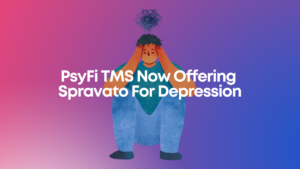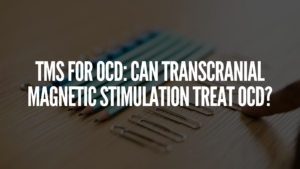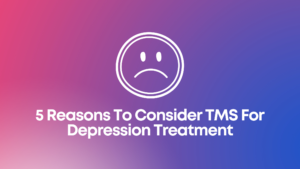There is a lot of information to take in when considering TMS therapy for addiction treatment. Here are some of the most commonly asked questions and their answers to help you make the best decision for you or your loved one.
What is TMS?
TMS stands for transcranial magnetic stimulation. It is a non-invasive, FDA approved outpatient procedure that uses targeted, extremely low level magnetic fields to stimulate nerve cells in the brain which are related to depression and addiction.
Who is Brainsway?
Brainsway is the company that manufactures and markets the Deep TMS device used for TMS Therapy.
PsyFi TMS is a behavioral mental health clinic in Edina, Minnesota that offers Brainsway TMS therapy for addiction and other conditions.
3 Benefits of TMS Therapy for Addiction
1) A Safe Alternative for Addiction Medication
Drugs that have been used as medication aids to treat addiction or alcoholism include Suboxone, Vivitrol, and Naltrexone. These medications have been found to be effective in some people, but they also have side effects. TMS therapy is a safe alternative to these medications with no known side effects.
2) Non-Invasive
Drugs that are used for addiction treatment can be invasive, such as shots and implants. TMS therapy is non-invasive in that it does not require any injections or implants.
3) No harmful side effects
There have been no reports of negative side effects discovered after extensive usage of TMS for a wide range of addictions and mental health issues. Minor responses to TMS include light facial twitching during the treatment and redness at the coil site. The good news is that these effects usually go away after treatment and do not last. TMS treatment may be worth considering as part of a comprehensive addiction therapy plan due to the fact that it offers excellent outcomes with no unpleasant side effects.
Is TMS Therapy Used for More than Addiction?
TMS treatment has been used to treat a wide range of mental health conditions, including:
- Anxiety
- Depression
- Obsessive-compulsive disorder
- Stroke rehabilitation
- Post-traumatic stress disorder
- Schizophrenia
What Does TMS Involve?
The patient is seated in a comfortable chair and wears earplugs during treatment to muffle any noise from the machine. The patient’s head is placed in a stabilizing frame so that the skull remains still. The TMS machine emits magnetic pulses to stimulate nerve cells in the brain, which can help reduce symptoms such as depression and addiction.
How Long Does TMS Take?
TMS treatment sessions last for about 40 minutes each session. Patients typically attend three sessions per week for four to six weeks.
What Happens After Treatment?
After the final TMS treatment, most patients feel an immediate improvement in their mood and symptoms. Some people report that they still feel benefits from TMS therapy up to 6 months after the last treatment session.
If you are looking for an effective, safe, and non-invasive way to treat a mental health issue or addiction, TMS may be an option for you. Learn more about our treatment options at www.psyfitms.com or get in touch with us today at info@psyfitms.com.




Your style is really unique in comparison to other folks I’ve
read stuff from. Many thanks for posting when you have the opportunity, Guess I’ll just bookmark this site.